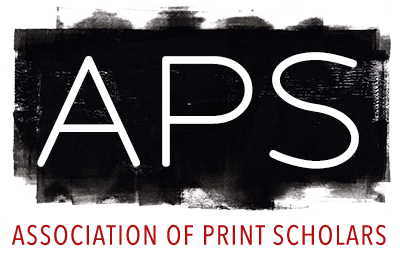CFP: Landscapes of Alterity, c. 1500-1700 (Toronto, 17-19 Mar 19)
Early modern prints, frontispieces, book illustrations, and paintings often imagined Asia, Africa, or the New World in terms of its ecosystem. These images, designed with European readers/viewers in mind, provided early modern audiences with glimpses of distant geographies and landscapes, real or imagined. For instance, Jacopo Stradano’s landscapes in his Nova Reperta series, although figments of the artist’s imagination, play a crucial role in defining lands that are waiting for European appropriation. Similarly, the landscapes in Albert Eckhout’s or Frans Post’s paintings contribute as much to the complexity of otherness and discourses of colonization as do the figures in these pictures. The people, flora, and fauna illustrated in Athanasius Kircher’s China Monumentis exist in landscapes that fully participate in the construction of such images’ meanings.
The authors of sixteenth and seventeenth-century textual accounts of foreign lands similarly attempted to characterize the most marvelous topographic features of distant lands. However, scholarship on these images and texts has often focused on the proto-ethnographic way in which these sources could convey ‘information’ (however inaccurate) about the landscapes from which the products derived. Alternately, scholars have considered the collection of foreign, ‘exotic,’ natural specimens (bulbs, plant samples), animals (living or represented), and other natural ‘wonders’ as components in microcosmic studioli or Wunderkammern, or have privileged the images that isolate specimens of flora and fauna from their ecosystem.
Rather than see flora and fauna as curiosities, devoid of spatial context, however, we hope to explore instead the ways in which early modern artists imagined, represented, manipulated, and invented non-European landscapes. Landscape, as a genre, had a long-standing and codified tradition in early modern Europe. By interrogating the ways in which this tradition accommodated or contributed to narratives of colonization and empire-building, we hope that we might better understand the agency of landscape as a genre and as a forum for the construction of ‘foreignness.’ We seek papers that focus on the spatial, cultural, and natural context of landscapes as sites for the production of knowledge and for the evolving discourse of ‘otherness’ in early modern Europe. Papers in this session might address the following questions:
• How does the genre of landscape incorporate observation, specificity (real or illusory), and notions of scientific accuracy to evoke the ‘exotic?’
• In what ways did artists force the limits of the genre, or manipulate the veracity of the landscape in order to comply with the conventions of the genre, while representing non-European landscapes?
• In what ways did artists (such as Frans Post or Albert Eckhout) work to shape European conceptions about foreign places?
• How did the diverse, and often competing agendas of various European countries shape the way in which foreign lands were represented, for example as welcoming, hostile, civilized, built, or savage?
• How did foreign landscapes, often manipulated to comply with the conventions of the European genre, accommodate local architecture? How are the tensions between colonial architecture and foreign ecosystems articulated by artists?
Please submit proposals to Erin Benay (eeb50@case.edu) and Francesco Freddolini (francesco.freddolini@uregina.ca) by July 23, 2018. Proposals should include a paper title (15-word maximum); and abstract (150-word maximum); keywords; and a brief academic CV (300-word maximum). Submission guidelines available via the 'External Link' below.
The authors of sixteenth and seventeenth-century textual accounts of foreign lands similarly attempted to characterize the most marvelous topographic features of distant lands. However, scholarship on these images and texts has often focused on the proto-ethnographic way in which these sources could convey ‘information’ (however inaccurate) about the landscapes from which the products derived. Alternately, scholars have considered the collection of foreign, ‘exotic,’ natural specimens (bulbs, plant samples), animals (living or represented), and other natural ‘wonders’ as components in microcosmic studioli or Wunderkammern, or have privileged the images that isolate specimens of flora and fauna from their ecosystem.
Rather than see flora and fauna as curiosities, devoid of spatial context, however, we hope to explore instead the ways in which early modern artists imagined, represented, manipulated, and invented non-European landscapes. Landscape, as a genre, had a long-standing and codified tradition in early modern Europe. By interrogating the ways in which this tradition accommodated or contributed to narratives of colonization and empire-building, we hope that we might better understand the agency of landscape as a genre and as a forum for the construction of ‘foreignness.’ We seek papers that focus on the spatial, cultural, and natural context of landscapes as sites for the production of knowledge and for the evolving discourse of ‘otherness’ in early modern Europe. Papers in this session might address the following questions:
• How does the genre of landscape incorporate observation, specificity (real or illusory), and notions of scientific accuracy to evoke the ‘exotic?’
• In what ways did artists force the limits of the genre, or manipulate the veracity of the landscape in order to comply with the conventions of the genre, while representing non-European landscapes?
• In what ways did artists (such as Frans Post or Albert Eckhout) work to shape European conceptions about foreign places?
• How did the diverse, and often competing agendas of various European countries shape the way in which foreign lands were represented, for example as welcoming, hostile, civilized, built, or savage?
• How did foreign landscapes, often manipulated to comply with the conventions of the European genre, accommodate local architecture? How are the tensions between colonial architecture and foreign ecosystems articulated by artists?
Please submit proposals to Erin Benay (eeb50@case.edu) and Francesco Freddolini (francesco.freddolini@uregina.ca) by July 23, 2018. Proposals should include a paper title (15-word maximum); and abstract (150-word maximum); keywords; and a brief academic CV (300-word maximum). Submission guidelines available via the 'External Link' below.
Relevant research areas: North America, Renaissance, Book arts, Engraving, Etching, Letterpress, Relief printing
[ssba]

Leave a Reply
You must be logged in to post a comment.